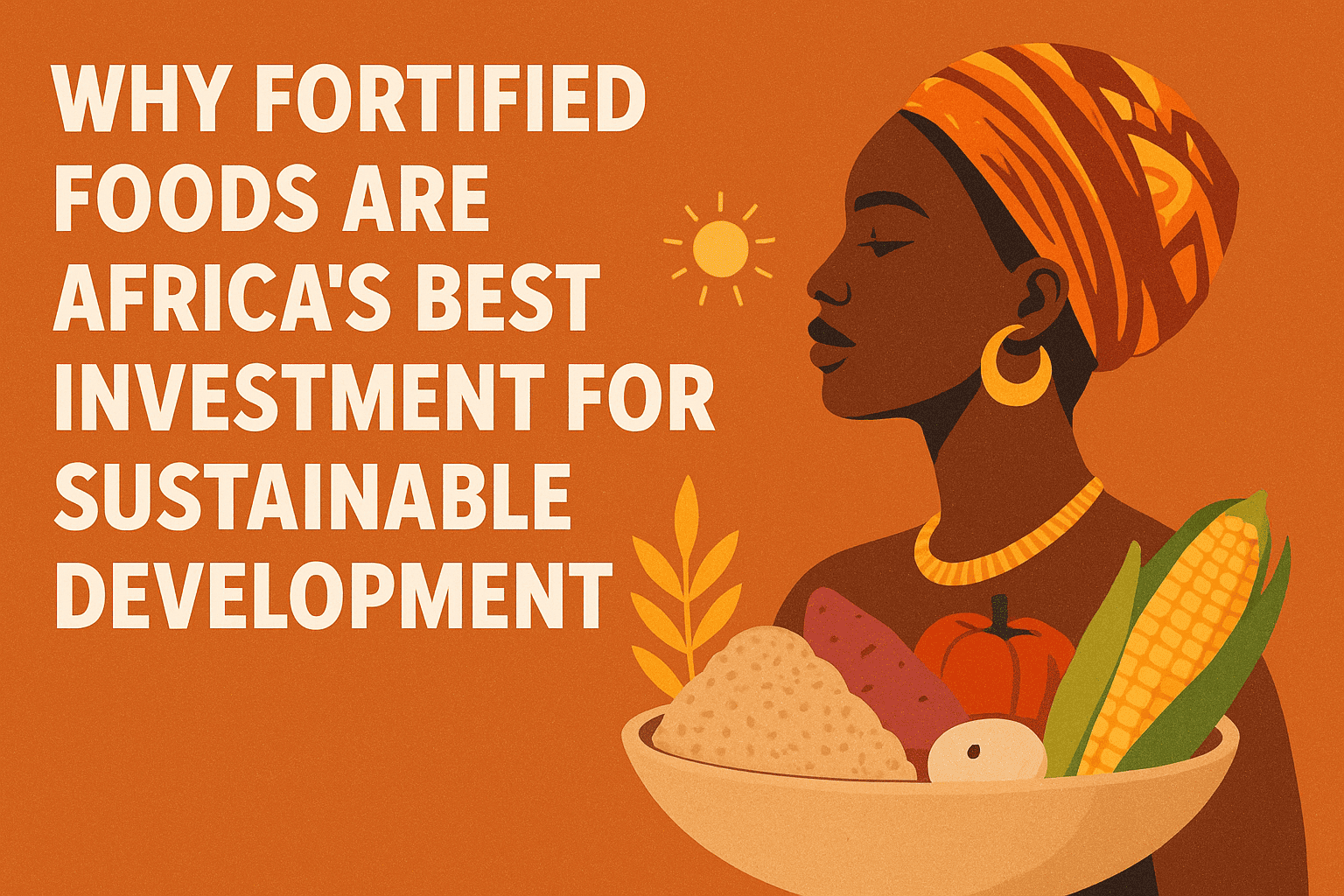
Across Sub-Saharan Africa, micronutrient malnutrition continues to silently undermine health, productivity, and economic growth. Millions of people, especially women of reproductive age and children under five, are affected by iron-deficiency anemia, stunting, vitamin A deficiency, and impaired cognitive development. Beyond individual suffering, these deficiencies impose enormous costs on national healthcare systems, reduce workforce efficiency, and perpetuate cycles of poverty. Tackling micronutrient deficiencies is therefore not only a public health priority but also an economic and social imperative for Africa’s sustainable development.
Why Fortified Maize is Critical for Nutrition Security
Maize is more than just a staple crop—it is a lifeline. For much of Africa, it provides up to 65% of daily caloric intake, making it more widely consumed than wheat or rice. The Africa Maize Fortification Strategy (2017–2026) identifies maize as the most strategic vehicle for delivering essential nutrients such as vitamin A, iron, folic acid, and zinc to millions of people.
Unlike wheat flour, which primarily benefits urban consumers, maize fortification reaches rural populations and low-income households at scale. Fortified maize flour ensures equitable access to nutrition, reduces micronutrient deficiency prevalence, and strengthens sustainable food systems across the continent.
The Health Impact of Micronutrient Malnutrition
Micronutrient malnutrition contributes to a range of preventable health issues, including:
Iron-Deficiency Anemia: Weakness, fatigue, and reduced cognitive performance.
Stunting and Growth Impairments: Hindered physical development in children.
Vitamin A Deficiency: Increased risk of blindness and immune system compromise.
Folate and Zinc Deficiencies: Birth defects, impaired immune response, and delayed cognitive development.
Addressing these deficiencies early has long-term benefits for human capital, workforce productivity, and national economic development.
Key Strategies for Scaling Up Fortified Foods in Africa
The Africa Maize Fortification Strategy emphasizes several critical action areas:
Mandatory Fortification Legislation: Strong regulatory frameworks ensure all large, medium, and small mills meet national fortification standards, guaranteeing consistent nutrient delivery.
Affordable Fortification Technologies for SMEs: Small hammer and roller mills can efficiently fortify maize flour with cost-effective equipment, making fortified foods accessible to more communities.
Reliable Premix Supply Chains: Ensuring a steady supply of vitamins and minerals reduces costs and prevents shortages that slow fortification efforts.
Consumer Awareness Campaigns: Public education and marketing campaigns help communities understand the health benefits of fortified maize, increasing demand and building trust.
Multi-Sector Partnerships: Governments, private sector actors, NGOs, and academia must collaborate to achieve long-term sustainability and program scalability.
Economic Benefits of Maize Fortification
Fortified maize is one of the most cost-effective public health interventions available. Studies show that every dollar invested in fortification programs returns multiple dollars in economic value through:
Reduced healthcare costs for nutrition-related diseases.
Improved maternal and child health outcomes.
Enhanced school performance and cognitive development.
Increased workforce productivity and national economic growth.
By strengthening human capital, maize fortification also directly contributes to the Sustainable Development Goals (SDGs), particularly targets on hunger, health, and equity.
Opportunities Amid Rapid Urbanization
Urbanization in Africa is accelerating demand for packaged maize flour. This trend presents a historic opportunity: fortified maize can become the default public health standard rather than an optional product. By leveraging regulatory frameworks, technological innovations, and consumer education, fortified maize can reach urban and rural populations alike, creating a sustainable pathway to eliminate micronutrient deficiencies across the continent.
Make Fortified Maize Non-Negotiable
The fight against micronutrient malnutrition requires coordinated action from multiple stakeholders:
Governments must implement and enforce fortification regulations.
Millers need access to cost-effective fortification technology.
Innovators and NGOs should support awareness campaigns and logistics.
Development partners must invest in premix supply chains and multi-sector programs.
By making fortified maize universally accessible and affordable, Africa can safeguard maternal and child health, improve education and workforce outcomes, and unlock the full economic potential of its populations.
